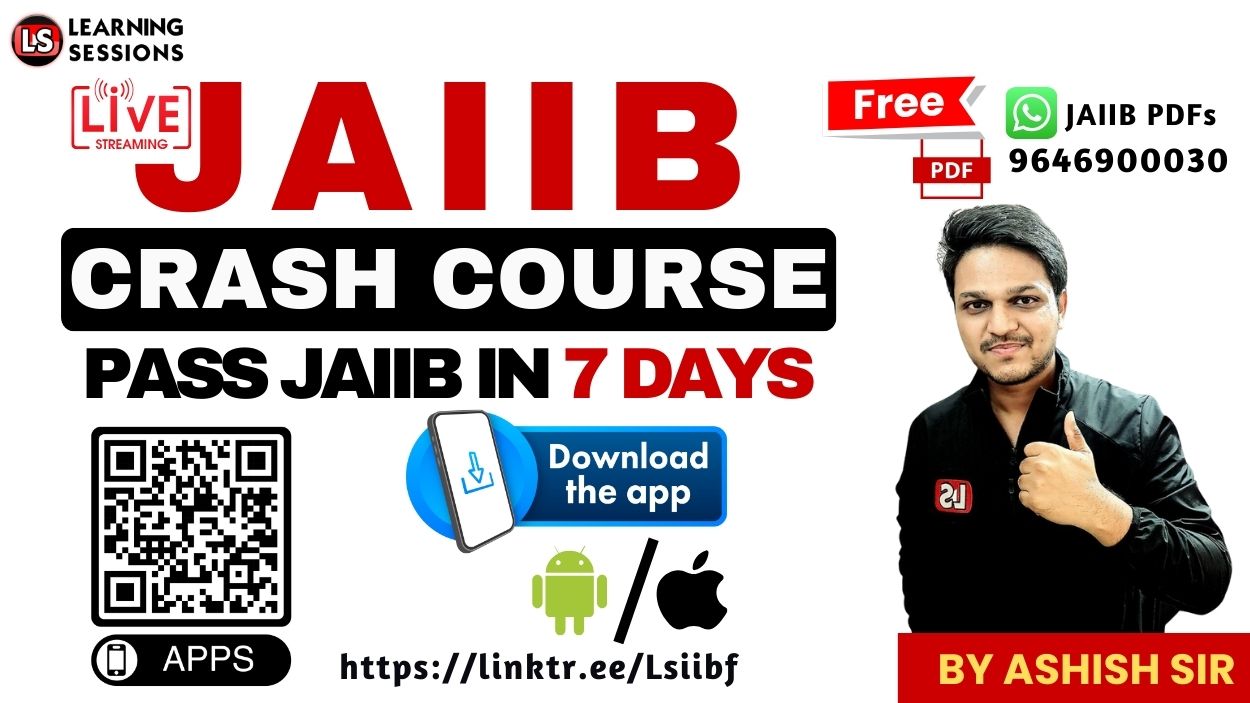Are you stuck trying to understand Foreign Exchange in BFM? You’re not alone! Most CAIIB aspirants find Module A extremely challenging—especially when it comes to FX transactions, Nostro/Vostro logic, chain rule applications, and derivative contracts. But what if I told you that you can learn all of this in a super simple, logical way—without rote memorization?
📚 CAIIB Study Resources 📚
👉 Check Here
👉 Check Here
👉 Check Here
👉 Get Tests Here
👉 Check Here
👉 Click Here
👉 Click Here
💡 Ideal for: CAIIB aspirants, bankers preparing for BFM, or anyone curious about real-life foreign exchange workings in Indian banks.
👉 So grab your pen, download the PDF, and watch till the end! Got a doubt? Drop a comment below—I personally reply 😊
👉 Before we dive in, watch this video for a complete breakdown:
00:00 – BFM Overview & How This Series Helps You Pass
Welcome to Part 8 of the BFM series! We’ve split the vast BFM syllabus into just two core parts: Foreign Exchange & Risk Management. This structured breakdown helps reduce overwhelm and improves retention. Perfect for those who consider BFM the toughest paper!
01:00 – What is the Global Forex Code?
- Endorsed globally including by RBI
- India’s FEDAI Code of Conduct (Revised) effective from 1st Sept 2021
- Aim: Standardize practices & build trust in forex transactions
02:10 – RBI Guidelines for Authorized Dealers (ADs)
RBI categorizes dealers into AD Category I, II, III, and FFMCs.
- Open non-interest bearing foreign currency accounts abroad
- Rupee accounts for Exchange Houses need RBI approval
- Follow board policies for foreign account balances
04:22 – Can Banks Invest Abroad?
Yes, banks can:
- Invest in short-term debt instruments (<1 year maturity)
- Auto-sweep surplus Nostro balances into allowed investments
- Extend loans to overseas subsidiaries/JVs
06:30 – Limits on Overseas Borrowings
Banks can borrow externally up to higher of USD 10 million or Unimpaired Tier 1 Capital. Facilities not settled within 5 days count toward the cap.
07:46 – Forward Contracts – What’s Allowed?
- Allowed only for documented and permitted purposes
- Match contract maturity with actual need
- Individual limit: USD 1 lakh, up to 1 year
- MSMEs can use it for credit-linked hedging
09:25 – What Derivatives are Permitted?
- IRS, FRA, Caps, Collars, Currency Options
- Forex-Rupee Swaps, Cross-currency options (back-to-back)
10:30 – Foreign Exchange Arithmetic & Chain Rule
- Understand premium vs discount scenarios
- Correct margin usage: add for selling, subtract for buying
- Use chain rule logic to convert currencies like GBP to INR
13:49 – Inward Remittance Logic
When USD is credited to Nostro:
- TT Buying Rate is used
- Bank buys USD from customer
15:36 – Outward Remittance Logic
- TT Selling Rate is used
- Customer buys USD from bank
17:17 – Examples of Inward & Outward Transactions
Inward: FDI, ECB, FCCBs, Exports, Education, Family Remittance
Outward: Imports, Tuition, Medical, Patents, Royalties
✅ All governed under the LRS – $250,000/year
[FREE EPDF] Bank Financial Management | Chapter 1 | Part 5 | CAIIB Exam
20:14 – Real Numerical Examples
- TT Buying/Selling logic
- Forward premium & chain rule calculations
- TT vs Bill rates in case-based scenarios
Conclusion
This was Chapter 1 of Foreign Exchange from BFM, and you’ve now covered everything from theory to practical numericals.
- Understand rate applicability and logic
- Apply formulas to real exam-level questions
🔥 Don’t stop here! Practice the same numericals and comment below with any questions—I personally reply 😊
👉 Subscribe to our channel and follow us for more expert content!
📥 Download the PDF Notes
Click below to download the complete session notes & solved numericals PDF:
Also Like:







